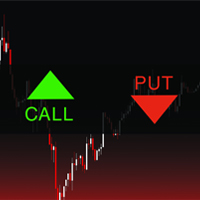

Call writing is a strategy where an investor or a trader sells Call options of an underlying asset. The Call option seller has the obligation to sell the underlying asset at a specific price (strike price). The buyer has the right to purchase the underlying asset at strike price within a specific time (until expiration).
The seller of a Call Option in the stock market receives a premium from the buyer of the Call Option. This is the payment for granting the buyer the right to purchase the shares at the strike price. If the underlying asset’s price remains below the strike price until expiration, the Call option expires worthless, and the seller of a Call Option keeps the premium as profit.
However, if the price of the underlying asset rises above the strike price, the buyer may exercise the Call option. In this scenario, the seller of a Call Option is obligated to sell the shares to the option buyer at the strike price. While this limits the potential downside gains for the seller of a Call Option. But keeps the premium received from selling the Call option, the upside loss can be significantly high.
Call writing is often employed by investors or traders who have a neutral to a slightly bearish view. By selling Call options, they can generate income through the premiums while also potentially profiting from limited upside price movement.
Put writing involves selling Put options on an underlying asset that the investor or trader is willing to purchase at a specific price (strike price). By selling a Put option, the seller grants the buyer the right to sell the underlying asset to them at the strike price within a specified period.
When implementing a Put writing strategy, the seller receives a premium from the buyer of the Put option. If the underlying asset’s price remains above the strike price until expiration, the Put option expires worthless, and the seller keeps the premium as profit. In this case, the seller keeps the cash received from selling the Put option.
However, if the underlying asset’s price falls below the strike price, the buyer may exercise the Put option, and the seller is obliged to purchase the asset at the strike price. This limits the potential upside gains for the seller of a Put Option and keeps the premium received from selling the Put option, the downside loss can be significantly high.
Put writing is typically employed by investors or traders who have a neutral to a slightly bullish outlook on the underlying asset. This strategy allows them to generate income from the premiums received and potentially also profit from limited downside price movement.
Overall, it is important to understand that both Call writing and Put writing strategies have associated risks. The underlying asset’s price movement can impact the profitability of these strategies, and investors should carefully consider the potential outcomes and risks before implementing them. Hedging the sold positions is very much advisable in case of a significant move in the underlying asset.
Gaining in-depth knowledge is advisable to ensure a thorough understanding of the strategies and their suitability for individual circumstances.
This was about call writing and put writing. To know more about such trading concepts, visit
https://sharekhaneducation.com/ or visit